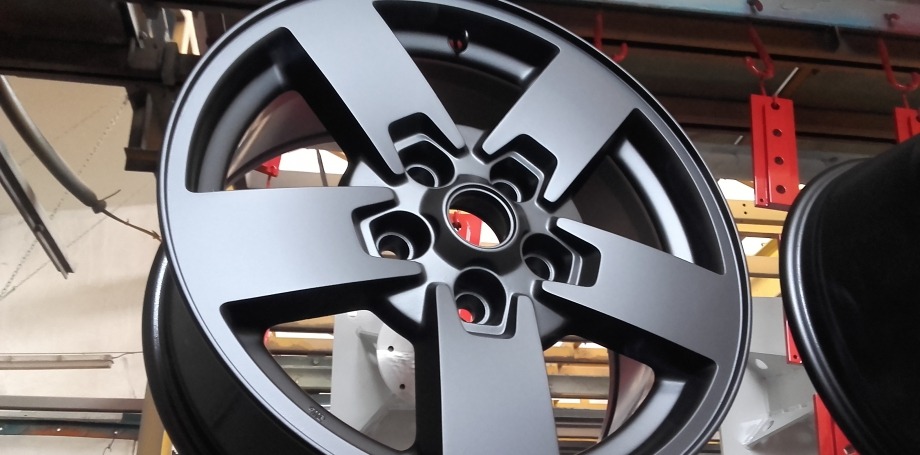Renovation of discs
We will planish the discs, we will repair any attritions as well as scratches. By renovation instead of purchasing a new disc you can save significant amounts.
We always try to meet customer expectations and find an ideal solution.
A wide choice of colour shades, possibility of use of special coating materials.
Planishing and lathe turning of discs
Blasting and coating
A wide choice of colours and colour shades
Renovation results
Planished and lathe-turned discs
Perfect surfaces without scratches
Nice and representative designs
Discs look just like new
Longer lifetime of both discs and entire wheels

Renovations of metal sheet discs
Renovations of aluminium discs (planishing and lathe turning)
From CZK 500 per item
Surface treatment of aluminium discs (blasting and coating)
From CZK 1,000 per item
Frequently asked questions
What is powder coating?
Modern surface treatment of metal products.
The principle is application of the powder coating material onto the part surface with subsequent curing in the oven. The powder coating material contains resins, pigment, or additives, and creates dry powder consistence. In order to ensure good adhesion of the powder coating material on the part, the application equipment supplies an electrostatic charge, and the part as such is grounded. The application of the powder coating material on the part uses compressed, dried and purified air which is produced in a compressor station, dried in an absorption dryer and purified by means of a special carbon filtration system.
Electrostatic energy uses the fact that particles with opposite charges attract each other. This fact causes attraction of powder coating particles to the sprayed part and adhesion on its surface. The powder coating material is cured at a temperature of 180 °C to 200 °C in the curing oven and adheres to the surface of the product. After 20 – 30 minutes of curing, the product is allowed to cool and is immediately prepared for shipment.
- The coated layer is resistant to impacts
- Good resistance to scratching
- Environmental friendliness
- Excellent external durability
What is blasting?
It is a well-known and rapidly expanding method of surface pre-treatment. The surface of the blasted object is cleaned, roughened or otherwise treated by blasting before its final treatment, such as coating or galvanisation. We use the compressed-air method, which is highly effective. This is a technological procedure of surface preparation used for various (usually hard) materials by using a stream of pressurised abrasive particles.
The surface is blasted at various levels:
- SA – blasting: It removes visible and non-adhesive scale, rust and other impurities. All residuals must fully adhere to the base.
- SA 2.5 – blasting on an almost clean metal: It removes visible scale, rust and other impurities. Any residual traces of impurities will appear only as light stains in the form of areas or belts.
- SA 3 – blasting on a fully clean metal: It removes all visible traces of scale, rust and other impurities. The surface has a uniform metallic appearance.
What is chemical pre-treatment by phosphating?
Phosphating is chemical treatment of surface of metal parts for the purpose of increasing the resistance to corrosion and improvement of adhesion for the next surface treatment. It is one of the most frequently used methods of chemical treatment of surfaces during which crystalline tertiary water-insoluble phosphates are created.
The crystalline layer arising during this process is insoluble in water and organic solvents. It has very good cohesion with base metal. Without any further treatments it is suitable as a conversion surface for coating. At present we offer suspension phosphating to our customers, when we remove gross impurities from metal parts at first, this is followed by phosphating at 60°C, rinsing with water and at the end rinsing with demineralised water.
Chemical pre-treatment is another important factor for the final quality of products.